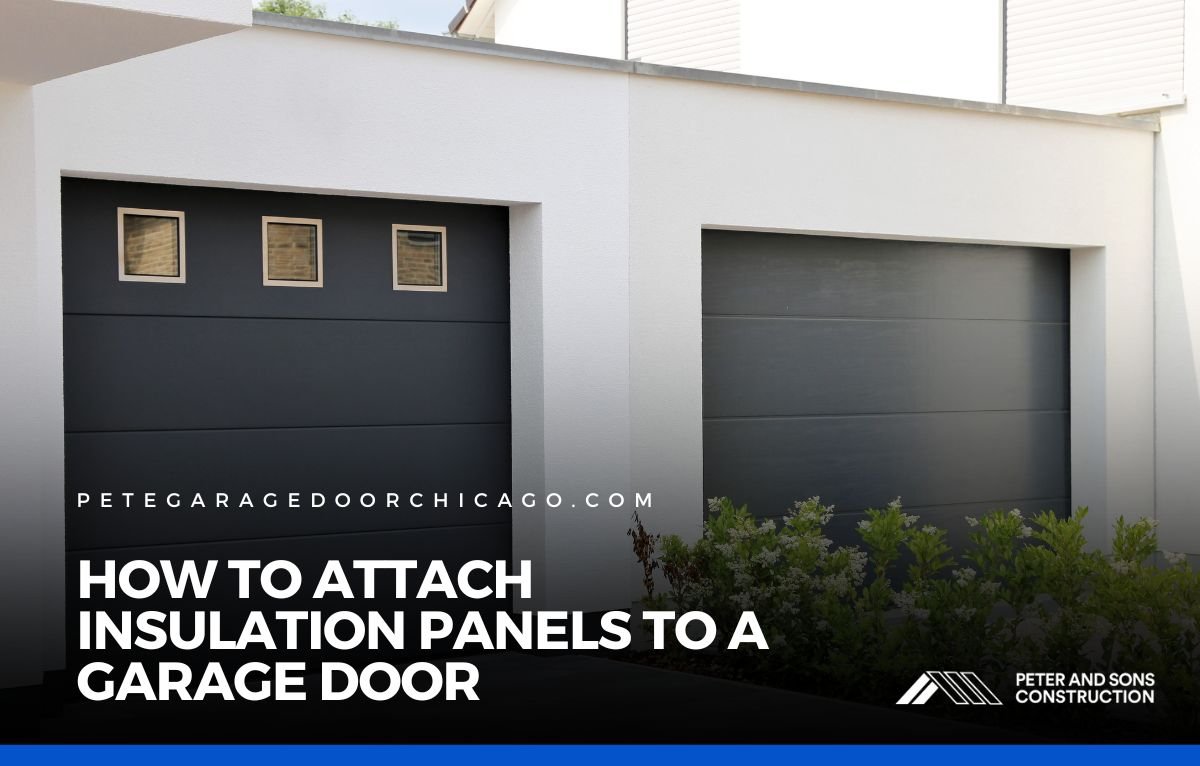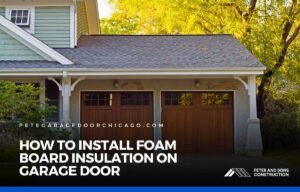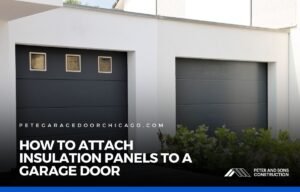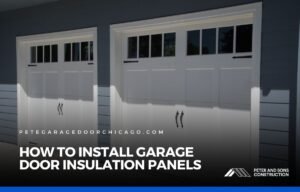How to Attach Garage Door Insulation Panels (So They Actually Stay Put)
- Editorial Team
- September 28, 2025
- 9:19 pm

Garage door insulation kits often advertise quick installs—“Just stick and go!” But if you want the panels to actually stay put through winter cold, summer humidity, and daily movement, it’s worth slowing down and doing it right. Attaching insulation panels isn’t just about taping them on. It’s about proper prep, secure contact, and alignment that doesn’t mess with your door’s balance.
Here’s how to get a clean, lasting result that improves your garage’s comfort without messing up how your door works.
Why Panel Attachment Matters More Than You Think
Most garage doors are made from metal—great for durability, not so great for thermal control. Insulation panels are the fix, but if they’re installed wrong, they won’t help much. Panels that pop out, sag, or shift over time can interfere with door mechanics or let heat leak right back out. Worse, poor installation might void your insulation kit’s warranty.
That’s why solid panel attachment is key. With the right prep and placement, your insulation stays effective and low-maintenance for years.
What You’ll Need
You don’t need a contractor’s toolbox to get this right. Just a handful of basics:
- Garage door insulation panels (foil-backed or foam)
- Tape measure
- Utility knife or insulation shears
- Straightedge or level
- Degreaser or soapy cleaner
- Rag or towel
- Double-sided adhesive tape or mounting clips (depending on your kit)
- Optional: Foil tape to seal edges
Pro tip: Choose insulation designed for garage doors—not leftover house insulation. Garage kits are lighter and cut to flex slightly with the door’s movement.
Step-by-Step: How to Attach Insulation Panels Securely
- Measure the Recessed Panels
Most garage doors have a slightly recessed panel structure. That’s where the insulation should sit—flush, not overlapping. Measure both the height and width of each recessed section. Even small differences matter if the door has aged or warped slightly.
Avoid guessing or eyeballing. Write the measurements down as you go. If the panel gaps are inconsistent, plan to trim each insulation panel individually.
- Prep and Clean the Surface
This is where most shortcuts go wrong. A dusty, oily, or cold panel surface will not hold adhesive well. Clean every panel using degreaser or mild dish soap diluted with water. Rinse and dry thoroughly. If the temperature is below 50°F, consider warming the garage slightly to help the adhesive grip better.
Clean surfaces = long-term stick.
- Cut Panels to Fit (Don’t Jam Them)
Using a straightedge and utility knife, cut each insulation panel to your measured size. Aim for a snug fit that presses in lightly without bowing the metal. For foil-faced panels, keep the reflective side facing the direction recommended—usually outward to bounce back radiant heat.
Jamming oversized panels in will just push them out later or unbalance your door. Undersized ones leave air gaps. You want just-right.
- Choose the Right Mounting Method
There are two popular ways to attach insulation panels:
- Double-sided adhesive tape: Ideal for clean metal surfaces. Apply tape around the edges of the insulation panel. Press it into the garage door slowly, starting at the top and smoothing down.
- Adhesive clips: Some kits come with plastic retainer clips that pierce through the panel and anchor into the door. These are great for movement-heavy doors or humid environments.
Pro tip: Wear gloves when handling foil-backed foam. Some panels have fiberglass fibers or edges that can irritate your hands.
- Seal Around the Edges (Optional)
If there are slight air gaps between the insulation and panel edge, seal them using aluminum foil tape. This boosts the insulation’s performance and gives it a clean, professional look. Just avoid taping over any hinges or joints.
If you’re dealing with curved corners or odd shapes, cut small triangles to fill in corners and tape around them. Don’t leave open air pockets if you can help it.
- Check Door Balance
Insulation adds a few pounds to your door. While most modern openers can handle the extra weight, it’s smart to test the door manually. Open it halfway and let go—if it slams down or shoots up, the spring tension is off.
Uneven movement? Call a pro to adjust the spring tension safely.
What Makes Panels Fall Off
Even with high-quality insulation kits, panels can still fall off if the installation steps are rushed or skipped. One of the most common reasons is poor surface prep. Dust, grease, or moisture left on the garage door will prevent adhesive tape from sticking properly. If the surface isn’t completely clean and dry, the panels may detach within days—especially during temperature changes.
Another issue is using the wrong adhesive. Household glue or low-grade tape won’t hold up to the extreme hot-and-cold cycles garage doors face. That’s why it’s important to use tape or clips designed specifically for insulation kits. Incorrectly sized panels can also cause problems. Panels that are too tight will bow or pop out when the door moves, while panels that are too loose leave gaps that reduce effectiveness and increase the chances of falling.
Lastly, some homeowners forget to account for the garage door’s motion. A poorly balanced door or one with tight clearances can snag on panels as it opens and closes, loosening them over time. Avoid these common mistakes, and your insulation will hold up longer and work better.
Post-Installation Benefits
Once installed properly, insulation panels offer immediate benefits. The most noticeable is temperature control. In winter, your garage stays warmer for longer without constant reheating. In summer, the panels help reflect heat and reduce the greenhouse effect inside the garage. This is especially valuable if your garage connects to your living space—keeping energy costs down and indoor comfort up.
Sound insulation is another plus. The panels help muffle outside noise from traffic, neighbors, or wind. If your garage is used as a workspace, gym, or laundry area, you’ll appreciate the quieter environment. You’ll also notice a reduction in dust and drafts, since insulation helps tighten up air gaps and keeps debris from sneaking in.
Beyond comfort, this upgrade can also improve your home’s resale appeal. A well-insulated, clean-looking garage door is a subtle signal of home care and energy efficiency—something buyers tend to value.
Know When to Call for Backup
If your garage door has decorative inlays, custom paneling, or non-standard shapes, it may be worth getting help. Likewise, if your opener is old or struggles with balance, a professional can safely adjust it and install the insulation without compromising function.
At Peter and Sons, we handle every detail—from cleaning and cutting to proper mounting and spring adjustment. Whether your goal is energy savings or comfort, we make sure your garage door performs better and looks cleaner.



